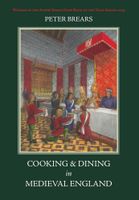Advertisement
Dining in the Chamber
By Peter Brears
Published 2008
The chamber was the everyday living-room of the lord and his family, together with the senior members of his household and many personal servants. Access to this room was denied to lower servants and visitors of low status but, by modern standards, it was still a relatively communal, rather than strictly private space. Up to around 1300 the chamber might lead off either the upper or the lower end of the hall, but then the lord and his family began to abandon the high table in the hall as their usual dining-place, and retire into their chamber for all their meals.1 This desire for an increasing degree of separation between the nobility and the bulk of their households, and all their banal operations, was quickly reflected in the planning of domestic buildings. Those chambers at the low end of the hall, usually over the buttery and pantry, or a cellar, and close to the entrance doors and the noise, bustle and smells of the kitchen, were no longer constructed for family use but, like the high table in the hall, were usually left in the occupation of the steward, the head of the domestic administration. From now on, the lord’s chamber was always either off the upper end of the hall, or in its own courtyard or tower even further removed from the household servants.2

